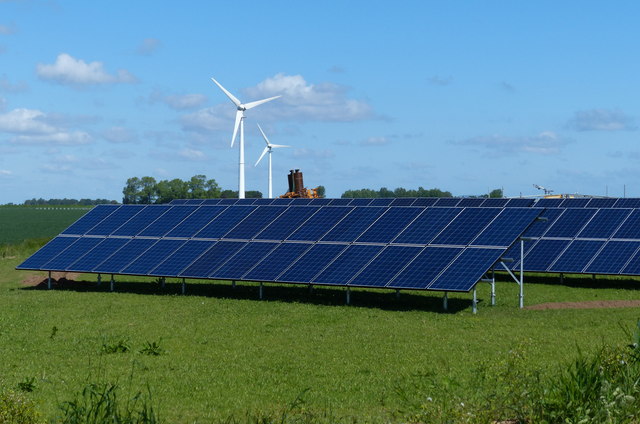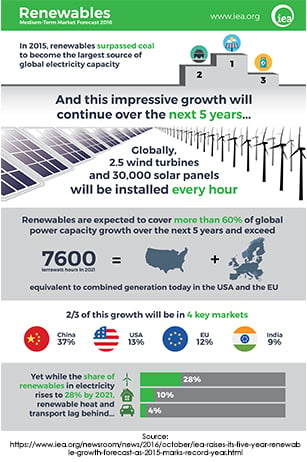Renewable Energy Taking Over?

The International Energy Agency (IEA) recently announced that renewable energy sources (wind, solar, etc.) surpassed coal last year to become the largest source of power capacity in the world.
Last year renewables represented more than half the new power capacity around the world, reaching a record 153 Gigawatt, 15% more than the previous year.

According to the IEA, about half a million solar panels were installed globally every day last year. In China, which accounted for about half the wind additions and 40% of all renewable capacity increases, two wind turbines were installed every hour.
Why Does This Matter?
Renewable energy sources are seen as a key element in global efforts to combat climate change because they provide energy through natural processes and are replenished at a higher rate than they are consumed.
It's important to note, it's the capacity to generate power that has overtaken coal as a source of power, rather than the actual amount of electricity produced.
However, burning coal for energy has many negative impacts on the environment including smog, acid rain, and water and air pollution. Coal combustion also produces 39 percent of global carbon dioxide (CO2) emissions (carbon is a major component of coal) and is a major contributor to global warming.
Why the Increase in Renewables?
The IEA cites two notable reasons for the growth in renewable sources—government policies and declining costs.
There is more policy support for using renewables in the United States, China, India, and Mexico. Some countries are even beginning to offer financial incentives. For example, the U.S. has extended tax credits.
While climate change is a powerful influencer for renewables, it's not the only factor influencing their use of them. In many countries, cutting deadly air pollution and diversifying energy supplies to improve energy security play an equally strong role in growing low-carbon energy sources, especially in emerging Asian countries, according to the IEA.
"We are witnessing a transformation of global power markets led by renewables and, as is the case with other fields, the center of gravity for renewable growth is moving to emerging markets," said Dr. Fatih Birol, the IEA's Executive Director.

The IEA expects renewables to remain the fastest-growing source of electricity generation over the next five years, forecasting their share to grow to 28% by 2021.
Although the growth of renewables will contribute to the fight against climate change, we as humans also have to do our part to help.
Here's what you can do to help the fight against climate change:
1. Reduce Energy Use: Adapt energy-saving habits. Make sure you turn the lights off when leaving a room, use energy-efficient light bulbs, and unplug electronics when they are not in use.
2. Transportation: Walk or bike when possible. If not, take public transit or carpool. When purchasing a vehicle, look for one that's better when it comes to gas mileage.
3. High Efficiency Appliances: When shopping for appliances, look for high efficiency units. These use a minimum of 20% less energy than the regular appliances.
4. Research Your Power Source: Talk to your power provider about your energy source and see if a greater percentage of your power source could come from renewable resources.
5. Recycle: Make it a habit to recycle daily. Aim to purchase items that use recycled packaging, and dispose of items such as electronics responsibly.
